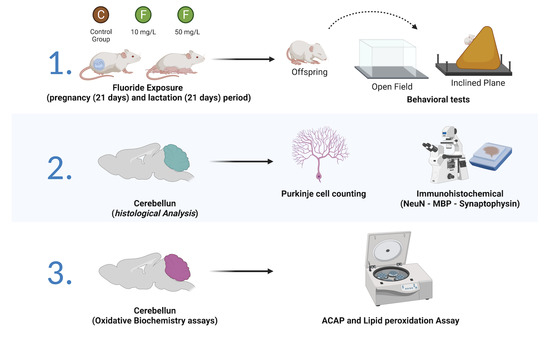Abstract
Fluoride (F) is abundantly present on Earth and plays a beneficial role in human health. However, exposure to high doses of F can be a risk, mainly in endemic fluorosis regions. In light of this, we investigated the effects of F exposure during the intrauterine and postnatal periods of rats, in doses similar to those recommended in drinking water and the levels of F in regions with endemic fluorosis, on the offspring rats’ cerebellum. Pregnant rats were divided into three groups: control (received ultrapure water only), 10 mg F/L, and 50 mg F/L for a period of 42 days (21 days gestation and 21 days lactation). At the end of the lactation period, the male pups were evaluated by behavioral tests, morphological markers, and biochemistry assays. The results pointed out that 50 mg F/L exposure during the intrauterine and lactational period of rats is capable of promoting oxidative stress in the cerebellum with a decrease in Purkinje cell density and myelin basic protein compromise, which could be associated with functional motor impairments. In addition, although 10 mg F/L exposure promoted redox alterations, it did not affect other parameters evaluated, highlighting the safe use of F in low doses.
Keywords: fluoride; central nervous system; cerebellum; offspring; maternal exposure; oxidative stress; Purkinje cells; motor activity

